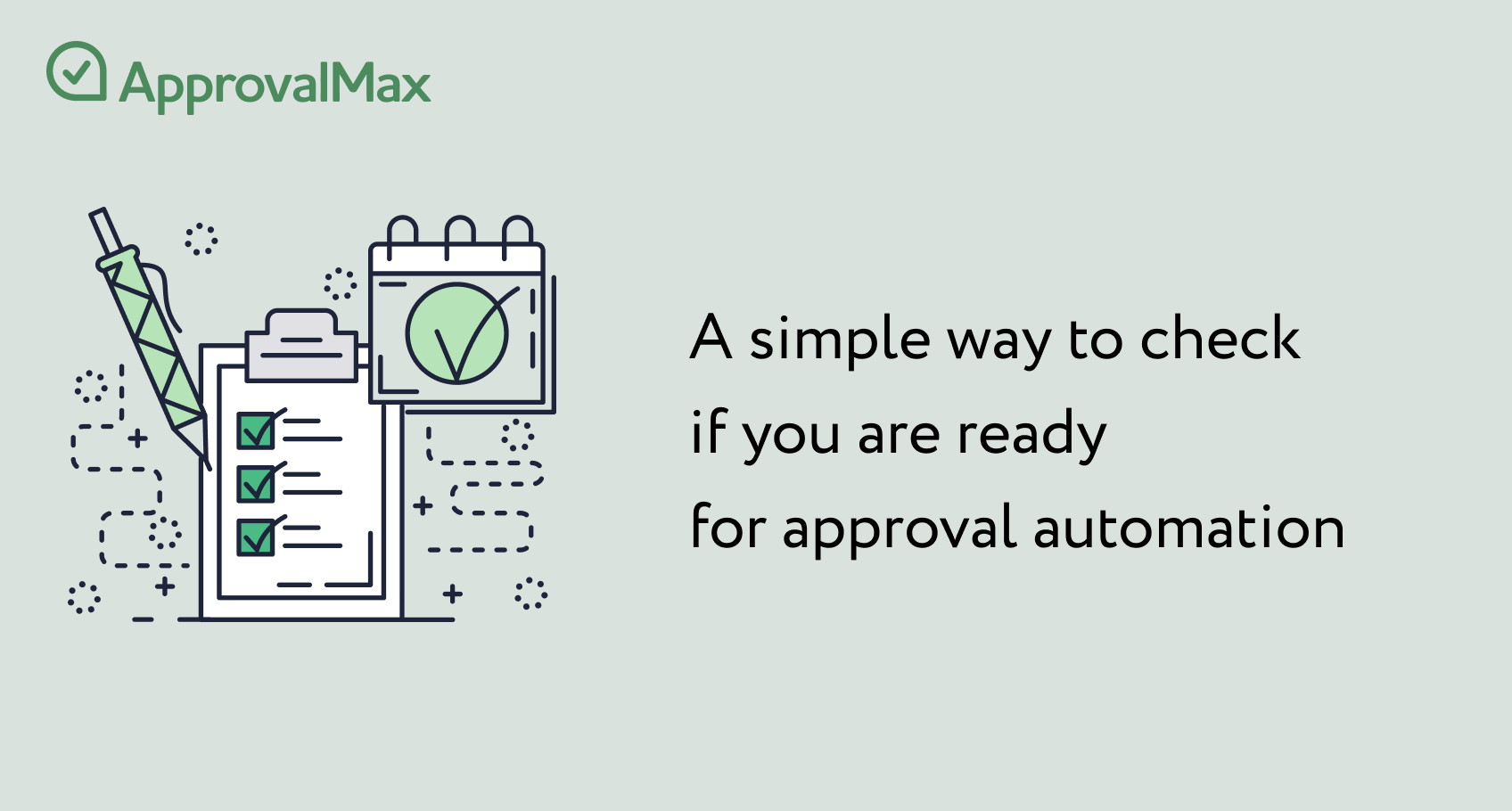Checklist: It’s high time for approval automation if…

“As we find in most use cases, the best time for implementing an approval system is BEFORE it is considered a necessity.
The reason is simple: when you get to the point where you do need an approval system, the company culture is often gridlocked. And as moving away from a paper-based system is a tall order, financial service providers like us face a lot of resistance when we suggest it. So, getting in before it’s high time for an approval system usually does the trick.”
Matt Griffin, Client Business Partner @Oxygen Advisors
All businesses can benefit from approval automation, but for some it is a pre-requisite rather than just nice to have.
The importance of approval automation is even greater with financial service outsourcing organisations that deliver accounting and advisory services because they must push for maximum operational efficiency in order to keep up profitability.
Such businesses simply cannot afford to waste time on activities outside of their service portfolio and direct revenue stream; like chasing approvers on the client side or collating signed paper authorisations when compiling an audit report, to name just two examples.
If you’re one of them, the best you can do is addressing the challenge of proper approvals before it starts to hurt. But how do you actually know that it’s time for change? We have the answer to this question!
Insights from multiple cases in organisations of various industries and sizes prove that there are always certain parameters that help you spot the signs pointing towards approval automation in good time.
Checklist of quantitative & business-specific indicators highlighting the need for approval automation
Key Indicator 1 of 5:
✅ You spend more than 30 minutes per week on approvals
In an ideal world, accountants and advisors don’t have to spend time verifying if bills were properly authorised because that should be part of an automated business process that does this kind of work for you.
And you certainly shouldn’t need to keep enforcing proper authorisations – possibly even using inapt tools like email or paper. For this task, there should be a well-defined approval matrix as well as a fully automated approval workflow that implements it.
The time you spend on approvals ought to be minimal and involve merely the review of exceptions or rejections.
Key Indicator 2 of 5:
✅ You have more than 1 authorisation level
The complexity of chasing approvers and tracking delayed approval decisions multiplies manifold with multi-level authorisations. Even when you’re only adding a second approval level, you’d be well advised to make the transition to an automated process.
Otherwise, you will inevitably become the hub for routing approval requests and that means figuring out which of them should be a parallel approval or a sequential one, making sure the upper-level approval occurs AFTER the lower-level one, tracking delays and arranging for approval delegation. Well, actually, all this adds up to a job of its own!
Key Indicator 3 of 5:
✅ You approve more than 30 bills or purchase orders per month
Another main contributor to approval complexity and hence a key indicator for approval automation is the volume of documents that have to be authorised.
Handling only few requests will most likely be possible with reasonable effort, even if you have a very complex approval process. 30 documents per month is an appropriate guide value here, though factors such as the number of approvers or having to provide an audit trail for each approval decision could reduce the figure of 30 considerably, maybe even to only 10. However, on average, any more than 30 bills per month and there is an incremental increase in processing effort and a significant time waste.
Key Indicator 4 of 5:
✅ You have several remotely located budget holders or decision makers
Getting an approval decision from a business manager you know and who is sitting right next to you is easy, no automation necessary here.
But having your budget holders distributed across various affiliates of your organisations – or even more challenging, working for a client organisation and having no clue as to their org chart or location of the approvers you need an authorisation from – is truly daunting.
So it’s easy to see that in a geographically distributed organisation or a multi-entity business which requires centralised financial controls, early implementation of approval automation is simply a must.
Key Indicator 5 of 5:
✅ You spend more than 30 minutes compiling approval logs for audit purposes
Again, the figure of 30 minutes is approximate and depends on the type of organisation as well as the regulatory requirements that apply to it.
Businesses operating under tighter financial controls are those funded by external investments, or legal entities open on new territories. They usually run a centralised finance and accounting department, or have their accounting function outsourced – monitored by a supervising body that requires periodic audit reports to check on their performance.
In this case it is particularly useful to have all approval decisions tracked and captured automatically because then compiling a digital audit report based on this data is done in next to no time.
Here they are: 5 key indicators making a case for approval automation. How about your organisation, is it time? Or even high time? Obviously, these guidelines need to be adapted to the specifics of your business, your vertical(s) – and geography. But they will prove very valuable when looking to maximise your operational efficiency.
Happy automating!
ApprovalMax is the best-in-class approval app in the Xero ecosystem. Check out www.approvalmax.com to learn more, or start a free trial.

